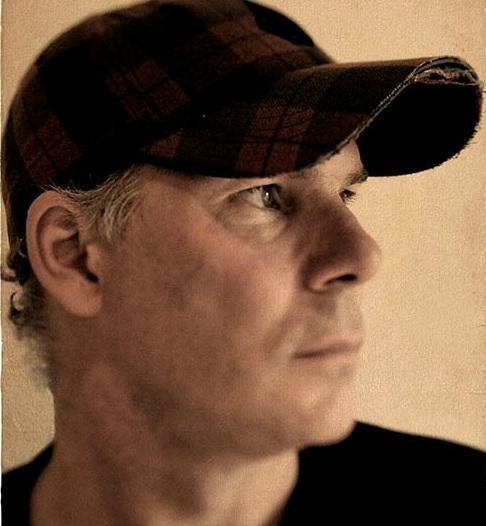By Grace Edwards.
Scottish-born Artistic Director Andy Howitt is set to make his mark on Melbourne’s dance scene. He is taking over as incoming CEO and Director of Ausdance Victoria, the state branch of Australia’s peak national dance body.
Howitt leaves behind his most recent post as Artistic Director of Citymoves Dance Agency in Aberdeen, Scotland. Prior to this, he was the Artistic Director at YDance (Scottish Youth Dance) for twelve years. He has also worked as Dance Director for TAG Theatre Company.
Howitt’s professional dance career began at the Trinity Laban Conservatoire of Music and Dance in London, where he originally trained in teaching and advanced performance. He went on to work extensively as a choreographer and performed with numerous companies including the Scottish Opera, Lloyd Newson’s DV8 Physical Theatre, Transitions Dance Company (Trinity/Laban), the Scottish Chamber Orchestra, Scottish Dance Theatre, Dannsa for BBC Alba and Dance House (BBC2).
Adding to his wealth of experience, the Ausdance Victoria directorship marks a new phase in Howitt’s career. So how does he hope Ausdance will help dancers and dance lovers under his leadership? Dance Informa’s Grace Edwards spoke to him to find out.
Andy, congratulations on your appointment as CEO and Director of Ausdance Victoria. Why do you think it’s important for dancers to have a body like Ausdance?
For me, what’s really interesting concerning Ausdance is that it’s unique. It’s national but it’s also very local, and I really like that approach to work. I’m very interested in the whole concept of national against local, working to develop the local community but then giving that kind of development a national profile.

Ausdance Victoria
What is your perception of Ausdance’s target community?
I think all dance organisations are hitting a critical time across the globe. It’s got to do with this whole concern everyone has with asking each other — are you a business? Are you here to develop new ideas? Are you here to achieve?
It’s a tricky situation, isn’t it? When a company relies so much on what it is, rather than developing with what it can be.
Yes, perhaps as a result of focusing on survival?
Yes, though I think sometimes the art relies too heavily on what it is — “It’s a fantastic feature company,” “It’s a wonderful orchestra” — rather than actually developing new areas and new things to push the boundaries.
So, how do you see Ausdance helping in that regard?
I hope that Ausdance becomes a real ambassador and challenger for dance in Victoria. I’ve always been a big believer that dance is a changing and a developing art form that goes into other areas you wouldn’t expect it to, and finding gaps in the corners. I’m always interested in trying to expand, reignite or redevelop groups in ways that you don’t expect.
What’s been your experience of Australian dancers so far?
I’ve seen quite a lot of Australian dance over a period here in Scotland, and I actually came out in 2000 to Adelaide. I worked with five or six different choreographers from Australia and the same number of Scottish choreographers at the Australian Dance Theatre’s studios over three or four weeks. Then they came out to Scotland and worked for three or four weeks. We made work on each other and we developed work.
I’m actually still in contact with many of those people and I’m most looking forward to making new connections with new people.
One of Ausdance’s criticisms has been its focuses on ballet and contemporary dance at the expense of other areas of the industry. Do you hope to address that in some way?
Yes. I think we have a huge hang up on what ‘style’ is, for instance, what is good style or what is a new style? I don’t care what dance style we talk about, what I do care about is how well it’s taught and if what a particular group wants is what the group gets.
If the group wants ballroom, give them the best ballroom they can get! Just don’t give them bad ballroom. If a group wants contemporary that’s really different and unique, give them that. But the teacher or choreographer who’s working with that group has to be the best. I’m very hardline on that.
So what’s your opinion of the standard of Australian dancers?
I think we all want to monitor how good or how bad we are or what level we are at. I’ve never had that as my core value [laughs]. My core value has always been — where can we get to? How can we achieve? How can we develop? What can we, as a group, make amazing?
I’ve never had an assumption of what’s good or bad, it’s just never been something that’s been a part of my mentality. After all, you’ve got to say that dance development in Scotland is very, very far down the line in terms of other issues we have here, and sometimes it just takes too much time asking those questions. Sometimes you’re best just to ‘be’, and to be ‘doing’, if you know what I mean.
Staying on the topic of core values, what do you feel Ausdance Victoria’s main focus will be as you prepare to take on its leadership?
One of the big challenges, in my mind, is how to be accessible. How do we make or develop work or ideas which remain tangible across the whole of Victoria? My challenge will be how to get into the smaller areas or communities there.
I want to allow everyone to get the opportunity to experience dance and see the wonder of dance that we experience everyday of our lives.
That’s quite a big mission, isn’t it?
Definitely. But as you said, nothing’s unachievable!
Yes, that’s right [laughs].
For more information about Ausdance in your state, visit Ausdance.org.au

















